By Christopher Miskimon
“You can run, but you will only die tired!” Lt. Col. Aaro Pajari gave his battalion this dire warning on December 8, 1939, as the invasion of his homeland raged. He had taken command of his unit, the 16th Infantry Regiment, only the day before. What he found appalled him. His men, both veterans and recruits, were utterly demoralized by the rolling Soviet advance and seemed on the edge of panic.
It was not an auspicious beginning to Pajari’s command. The Red Army had reached the edges of a pair of lakes named Tolvajarvi and Hirvasjarvi. On the western shore of Tolvajarvi sat a village of the same name. Pajari’s immediate superior realized something had to be done to restore the front and bolster his soldiers’ flagging morale. He decided an immediate attack was the only thing to be done; accordingly, he devised a daring assault on the Soviet rear area. Pajari would lead the attack himself, which would instill confidence among his men.
Pajari gathered volunteers for the bold move, which would be the first offensive action Finnish troops undertook during the brutal war with the Soviets. It began with a company-sized attack on the enemy front line. The move was a feint, designed to attract Soviet attention away from the impending assault on their flank. The Finnish infantry was met with heavy fire; the unit’s commander was soon cut down. It was the second commander the company had lost in a week. The Finns quickly began to fall back. The repulse was a costly one, but it served its purpose.
Meanwhile, Pajari led a pair of raiding parties across the thick ice of Lake Tolvajarvi. They quietly moved around a Soviet force on nearby Kotisaari Island. In the dark the two groups soon became separated, however. The lost group then came to the edge of the ice, with freezing open water ahead. Unable to find a way across, the group had no real choice but to return to friendly territory. The attack was fast losing momentum. Only the last party, led by Pajari himself, remained to carry out the plan.
Still, these Finns fared better. The group came across a roving Russian patrol and quietly killed its members with their puuko knives. Continuing forward they spotted their objective, a Soviet battalion bivouacked near a bridge. Beyond them in the blackness, Pajari could see the campfires of two more battalions; an entire regiment lay asleep before them, and Pajari wanted to take them all. The Finns spread out along a ridgeline and opened up on the first Soviet position with a withering fire so surprising and intense not a single round came back at them.
 With the first enemy unit neutralized, the Finns moved on to the second. The situation became so confused that the remaining two Soviet battalions opened fire on each other. Their mission complete, the Finns snuck away as the Soviets continued to shoot at each other for hours. The only casualty of the night was Pajari himself. While skiing back he collapsed of a heart attack, a condition he had hidden. This was the price he paid for Finland’s first victory of the war.
With the first enemy unit neutralized, the Finns moved on to the second. The situation became so confused that the remaining two Soviet battalions opened fire on each other. Their mission complete, the Finns snuck away as the Soviets continued to shoot at each other for hours. The only casualty of the night was Pajari himself. While skiing back he collapsed of a heart attack, a condition he had hidden. This was the price he paid for Finland’s first victory of the war.
The Winter War between Finland and the Soviet Union was a bitter contest that would have far-reaching effects on World War II and the Eastern Front. It is the story of a Finnish David wounding a Soviet Goliath; it is also the story of a small nation trapped between two large powers at war and paying the price of geography. The tale is well told in Finland at War: The Winter War 1939-40 (Vesa Nenye, Peter Munter, and Toni Wirtanen, Osprey Publishing, Oxford, UK, 2016, 304 pp., maps, photographs, appendices, bibliography, index, $34.95, hardcover). The book reveals how the Finns courageously defended their nation against a Soviet war machine which could sustain enormous losses and still continue to grind its opponents remorselessly down.
The authors, all veterans of the Finnish military, have obviously poured much effort into this volume, and it shows in the detailed accounts and thorough storytelling. Major personalities down to regimental and task force leaders are covered in sidebars, putting faces to the names mentioned in the text. Osprey Publishing is known for its well-illustrated editions, and this work’s imagery is best described as lavish. Battle scenes, the home front, and media coverage of the war are all shown in photographs seldom seen outside Finland. This exhaustive history of the Winter War, the first in a two-volume set, gives the reader a very complete retelling.
 Finland at War: The Continuation and Lapland Wars 1941-45 (Vesa Nenye, Peter Munter, and Toni Wirtanen, Osprey Publishing, Oxford, UK, 2016, 336 pp., maps, photographs, appendices, bibliography, index, $40.00, hardcover)
Finland at War: The Continuation and Lapland Wars 1941-45 (Vesa Nenye, Peter Munter, and Toni Wirtanen, Osprey Publishing, Oxford, UK, 2016, 336 pp., maps, photographs, appendices, bibliography, index, $40.00, hardcover)
This is the companion volume to the previous review, published together. It completes the story of Finland’s journey through the maelstrom of World War II. The end of the Winter War saw the Soviet Union in possession of territory previously in Finnish control. Nazi Germany took notice of this and courted the Finns to join in the assault on the Soviet Union. At the time Germany had been successful everywhere; Finland became an ally of the Third Reich and acted to regain what was taken from it the previous year.
However, as the war progressed Germany’s fortunes waned. The Soviets brought their considerable weight to bear once again. Eventually the Finns had to make a difficult deal; they ceased resisting the advancing Soviets and instead turned on their former allies, forcing German troops out of Finland. The history is a tragic one of a nation trapped and without good choices. This book has all the strengths of its companion, detailed accounts of the action, excellent illustrations, and good maps. Together these two books round out the story of Finland’s war experience.
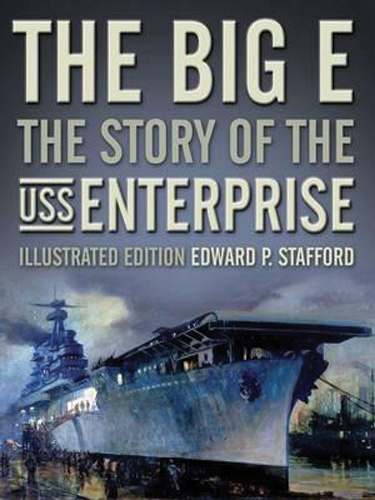 The Big E, the Story of the USS Enterprise: Illustrated Edition (Edward P. Stafford, Naval Institute Press, Annapolis, MD, 2016, 576 pp., maps, photographs, index, $75.00, hardcover)
The Big E, the Story of the USS Enterprise: Illustrated Edition (Edward P. Stafford, Naval Institute Press, Annapolis, MD, 2016, 576 pp., maps, photographs, index, $75.00, hardcover)
The aircraft carrier USS Enterprise was referred to by Secretary of the Navy James Forrestal as “the one vessel that most nearly symbolizes the history of the navy in this war.” The storied ship took part in almost every major naval battle of the Pacific War. It escorted the Hornet during the Doolittle Raid and fought at Midway, Santa Cruz, Guadalcanal, the Philippine Sea, and Leyte Gulf. Along the way it earned 20 battle stars.
The ship’s crew garnered thousands of stories of the war, and it seems as though all of them are included in this book. It is filled with almost day-by-day accounts of missions and shipboard life. The illustrations are equally extensive, making this coffee table book a pleasure to look through. Scenes of a busy flight deck are mixed expertly with shots of attacks in progress and views of the crew at work and play. The author, now sadly deceased, was a career naval aviator, and his knowledge of this subject adds materially to the quality of the book. The original edition was written in the 1960s. This updated and illustrated version is a tribute to the ship and those who fought—and sometimes died—aboard her.
 The Secret War: Spies, Ciphers and Guerillas (Max Hastings, HarperCollins Press, New York, 2016, 640 pp., illustrations, notes, bibliography, index, $35.00, hardcover)
The Secret War: Spies, Ciphers and Guerillas (Max Hastings, HarperCollins Press, New York, 2016, 640 pp., illustrations, notes, bibliography, index, $35.00, hardcover)
The story of spies and intelligence is a critical part of the history of World War II. Massive amounts of espionage, codebreaking, and research had to occur to enable many of the war’s victories. Britain had a long established worldwide network owing to its empire; it also possessed a technical study base second to none. The Soviet Union possessed a vast network of spies and was able to infiltrate both enemy and ally with seeming ease. Even the Americans, usually considered relative novices, had their notable successes, such as their codebreaking and ruses at Midway. Though only rarely as dramatic as stories of the battlefield, the intelligence front was as vital to victory.
This new work by famed historian Max Hastings is a one-volume history of the covert war. He posits the Allied victory was achieved in large part by success on the intelligence front. The Western powers were made stronger by their innovative use of civilian technology and personnel combined with military efforts. The advances made in electronic communications were particularly significant. All these arguments are cogently made and supported, making the book enjoyable and informative to read, a mix of gadgetry, calculation, and human drama.
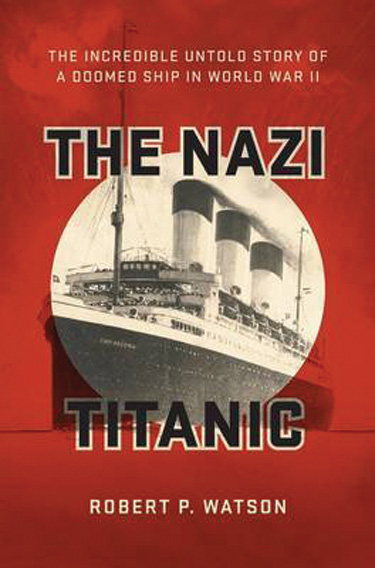 The Nazi Titanic: The Incredible Untold Story of a Doomed Ship in World War II (Robert P. Watson, Da Capo Press, Boston, 2016, 292 pp., maps, photographs, notes, bibliography, index, $25.99, hardcover)
The Nazi Titanic: The Incredible Untold Story of a Doomed Ship in World War II (Robert P. Watson, Da Capo Press, Boston, 2016, 292 pp., maps, photographs, notes, bibliography, index, $25.99, hardcover)
The German luxury liner Cap Arcona spent over a decade ferrying wealthy passengers across the Atlantic Ocean to the distant shores of South America. That tradition ended with the beginning of World War II; the Third Reich took over the ship and converted it into a floating barracks. Two years into the war it was even used in a propaganda film about the famed Titanic.
Afterward the ship languished until it was eventually filled with concentration camp inmates. Tragically, with the war just days from ending, the Royal Air Force bombed the ship, mistakenly believing it was transporting SS men to Norway. The Cap Arcona quickly sank, taking with it more than 4,000 prisoners, some two and one-half times the loss of the Titanic. Despite the magnitude of the tragedy, few know about it today, as word of the incident was lost amid the news of Hitler’s death and the war’s end.
Using a combination of scholarship and clear prose, the author makes the experiences of those who fatefully went aboard the Cap Arcona come to vivid life. Truly this is a story of people forced into the most horrible conditions and faced with a terrifying death in the icy waters of the Baltic Sea. Their tale is well told, from the hellish trains that took them to the ship to the dreadful air attack that sealed the fates of so many unnecessarily. It is a fascinating and moving story.
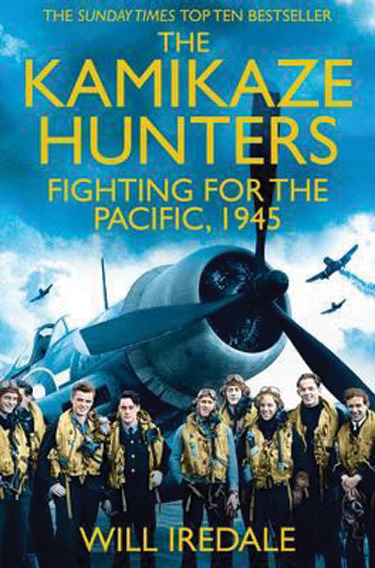 The Kamikaze Hunters: Fighting for the Pacific 1945 (Will Iredale, Pegasus Books, New York, 2016, 416 pp., maps, photographs, notes, bibliography, index, $28.95, hardcover)
The Kamikaze Hunters: Fighting for the Pacific 1945 (Will Iredale, Pegasus Books, New York, 2016, 416 pp., maps, photographs, notes, bibliography, index, $28.95, hardcover)
Great Britain was rejoicing in May 1945. The war in Europe was over, and the government declared a two-day holiday to celebrate the occasion. A group of British sailors and airmen, 6,000 miles away in the Pacific Ocean, had little cause for merriment, however. The British Pacific Fleet was engaged in a life-or-death struggle against the penultimate weapon of desperation: the Japanese kamikaze. These suicide attackers would take a horrifying toll of Allied ships and crew until war’s end, diving their bomb-laden aircraft into the hulls of enemy ships in the hope of shattering morale and forcing back the vast fleets that were daily drawing a constricting line around Japan itself. The fact that it was a forlorn hope did not stop them from trying.
The British Pacific Fleet was home to the 1st Aircraft Carrier Squadron, the largest such group the Royal Navy ever assembled. From the decks of these ships flew the pilots who would protect the fleet from kamikazes by engaging them as far from the fleet as possible. They flew American-built Vought Corsairs and British-made Supermarine Seafires, the naval version of the famous Spitfire. Time and again they went into harm’s way to guard Allied sailors from the racing death that sought to hit at them from above.
This is a well-written and thoroughly researched book, full of detail and stories relayed by the participants themselves. The book stands out even further due to its subject matter. The fight against the kamikazes is widely thought, even in England, to have been the province of the U.S. Navy alone. This new work shows the courage and sacrifice of the British aviators who fought just as hard and risked just as much toward the same goal. It is a fitting testament to them.
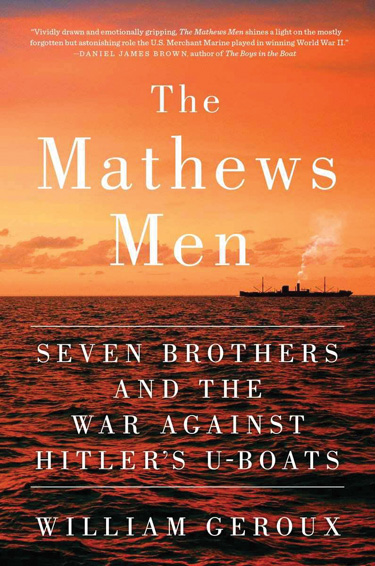 The Mathews Men: Seven Brothers and the War Against Hitler’s U-Boats (William Geroux, Viking Press, New York, 2016, 373 pp., photographs, notes, bibliography, index, $28.00, hardcover)
The Mathews Men: Seven Brothers and the War Against Hitler’s U-Boats (William Geroux, Viking Press, New York, 2016, 373 pp., photographs, notes, bibliography, index, $28.00, hardcover)
The Merchant Marine was one of the unsung organizations of the American war effort. The overwhelming bulk of the troops, weapons, equipment, fuel, food, and raw materials went from the United States to its Allies aboard transport ships crewed by merchant seamen. Getting to their destinations required those ships to navigate through waters patrolled by German submarines intent on sending them to the bottom. If a ship were sunk, its survivors had to endure freezing waters, fiery oil slicks, and stormy seas. Nevertheless, the Merchant Marine’s sailors did their job with courage and steadfastness, despite being treated as second-class citizens compared to members of the armed services. They suffered a significantly higher casualty rate than any of them but did not even qualify for GI Bill benefits.
The story of the Merchant Marine is told through the experiences of the extraordinary Hodges family. The family’s seven brothers all went to sea from Mathews County, Virginia, an idyllic locale home to many seafarers who served during World War II. The men from Mathews County served on merchantmen throughout the combat zones, doing their part to ensure soldiers and Marines got ashore to take the fight to the enemy. In turn, the author has ensured these sailors’ own tales are known to students of the war.
 The Heart of Hell: The Untold Story of Courage and Sacrifice in the Shadow of Iwo Jima (Mitch Weiss, Berkley Caliber, New York, 2016, 413 pp., photographs, bibliography, index, $28.00, hardcover)
The Heart of Hell: The Untold Story of Courage and Sacrifice in the Shadow of Iwo Jima (Mitch Weiss, Berkley Caliber, New York, 2016, 413 pp., photographs, bibliography, index, $28.00, hardcover)
Two days before the Marines assaulted the beaches on the Japanese-held island of Iwo Jima, a dozen small gunboats were sent in to help bombard the island and pave the way for the invaders. These gunboats were converted LCIs (landing craft, infantry). Normally such small vessels would ferry ashore Marines, but these were modified to carry a number of light guns and rocket launchers to provide close-in support and hit positions close to shore. The sailors who manned these gunboats were an important piece in the overall scheme of fire support for the Marines when they would be at their most vulnerable, in the opening hours of the landing.
The author has focused on one of these gunboats, LCI-449, telling its story through a combination of interviews, letters home from the crewmen, and archival documents. It is a tale of both courage and brotherhood; the Japanese artillery could shoot back at the nearby gunboats, and it took great devotion from the sailors to keep their boats in the fight and help their Marine brethren ashore.
 Paris ’44: The City of Light Redeemed (William Mortimer Moore, Casemate Publishers, Havertown, PA, 2015, 557 pp., maps, photographs, notes, bibliography, index, $34.95, hardcover)
Paris ’44: The City of Light Redeemed (William Mortimer Moore, Casemate Publishers, Havertown, PA, 2015, 557 pp., maps, photographs, notes, bibliography, index, $34.95, hardcover)
The liberation of Paris was a more complicated affair than is often portrayed. It was a sensitive political issue as well as a military one. Exactly which Allied ground forces would free Paris became the subject of much discussion. The Anglo-American armies, which provided the bulk of the troops fighting the Nazis, had their claim. The Free French forces, supplied by the Americans, wanted to take Paris as a matter of national honor. The French Resistance, which had carried the fight to the Germans as best they could before the invasion, also had a claim. The citizens of Paris might also rise up, though some of them were certainly past collaborators with the Nazis. The Germans might give up the city or destroy it, as they had so often on the Eastern Front.
It was a complex issue, and the author of this new work delves into the subject matter to separate myth from fact. He shows how French General Charles de Gaulle was planning for a military liberation of the city even in 1943. It was all part of his plan to reestablish France as a relevant nation. The text deftly shows the competing interests and the intrigues of each party to achieve a free Paris for their own ends.
New and Noteworthy
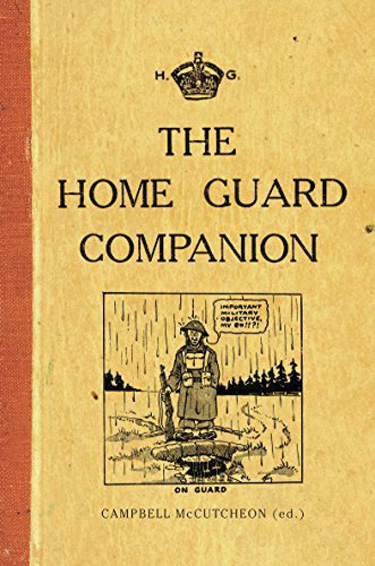 The Home Guard Companion (Campbell McCutcheon, Casemate Publishers, 2016, $16.00, hardcover) This is a reprint of both the original manual for the British Home Guard and a humorous edition of life in the Guard during the war combined into one book.
The Home Guard Companion (Campbell McCutcheon, Casemate Publishers, 2016, $16.00, hardcover) This is a reprint of both the original manual for the British Home Guard and a humorous edition of life in the Guard during the war combined into one book.
SOE: Churchill’s Secret Agents (Terry Crowdy, Shire Publications, 2016, $14.00, softcover) The SOE was the Allies’ premier espionage organization in World War II. The author reveals its training, methods, and actions.
A Dangerous Assignment: An Artillery Forward Observer In World War 2 (William B. Hanford, Merriam Press, 2016, $12.95, softcover or download) The author was a forward observer in the 103rd Infantry Division in Europe. This memoir relates his experiences fighting in the Vosges Mountains and elsewhere.
The Bridgebusters: The True Story of the Catch-22 Bomb Wing (Thomas Cleaver, Regnery History, 2016, $29.99, hardcover) Catch-22 is a classic work of war fiction. This book looks at the real-life unit that inspired the book.
“I’m the 82nd Airborne Division!”: A History of the All American Division in World War II After Action Reports (Robert P. Anzuoni, Schiffer Publishing, 2016, $69.95, hardcover) The story of the division is told through its own official documents. Over 400 original photographs accompany the text.
13th Fighter Command in World War II: Air Combat over Guadalcanal and the Solomons (William Wolf, Schiffer Publishing, $59.95, hardcover) This storied unit fought in the South Pacific, where it usually took a back seat to Marine flyers in the press. It nevertheless fought with distinction.
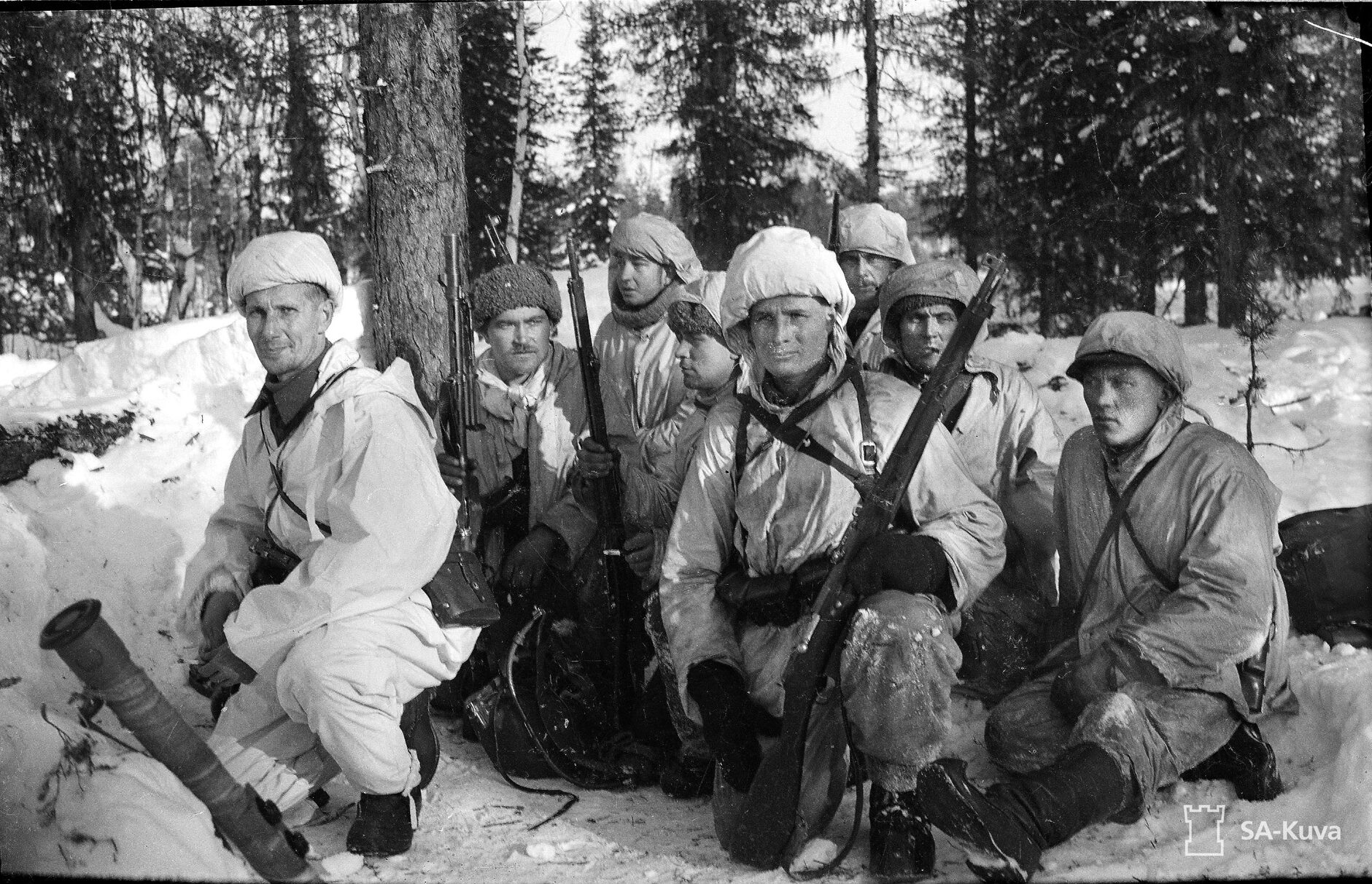
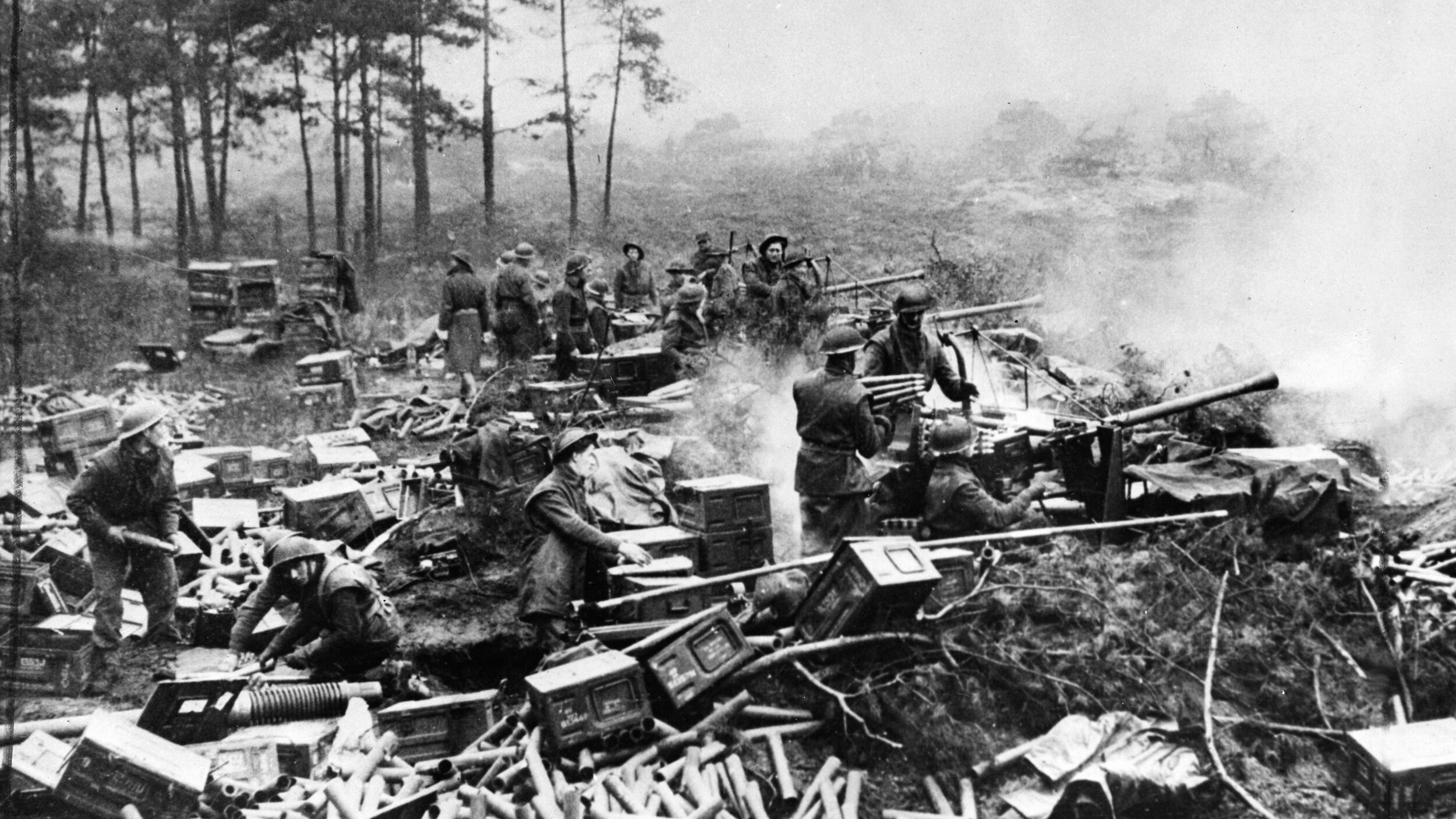
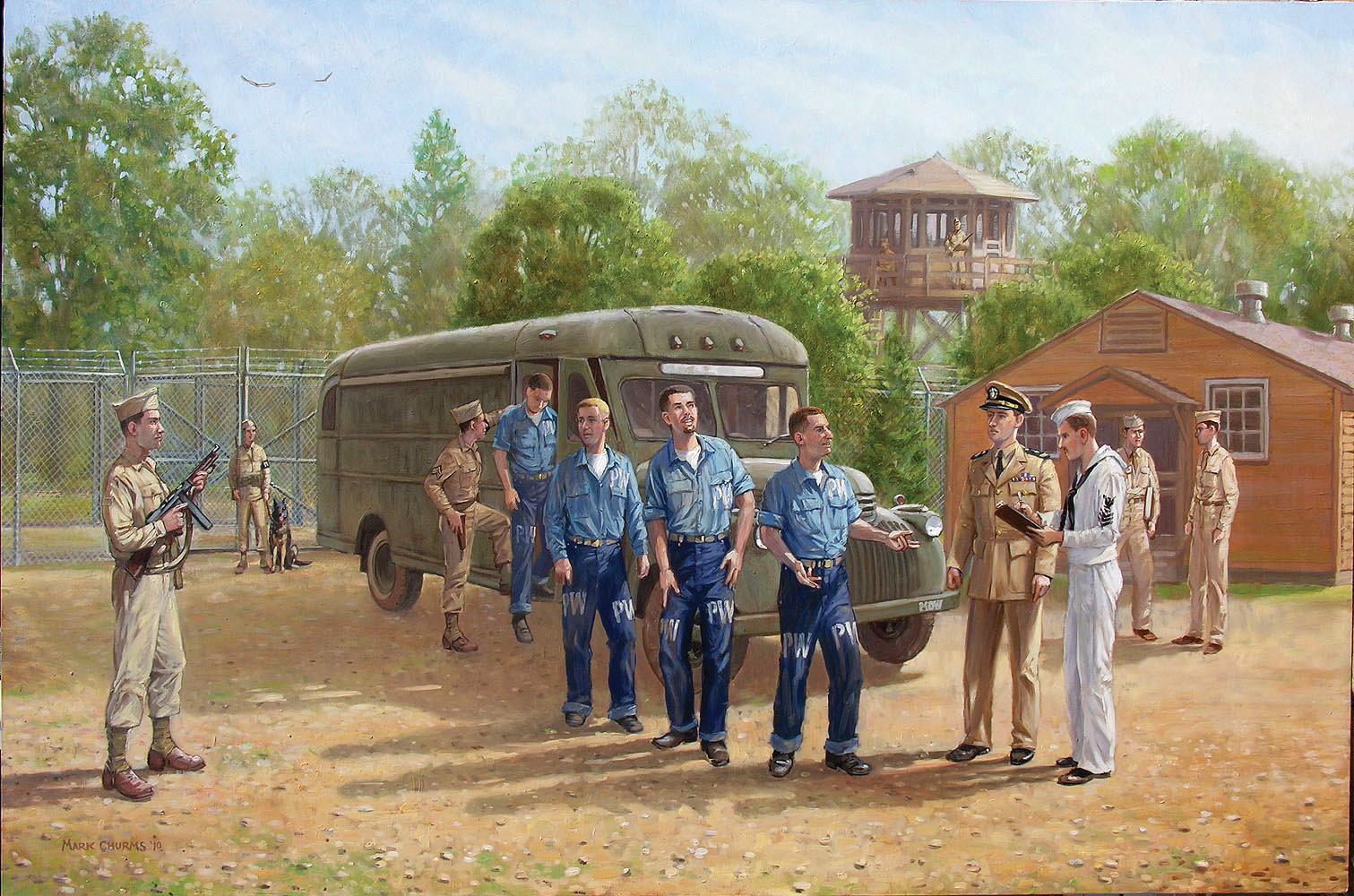
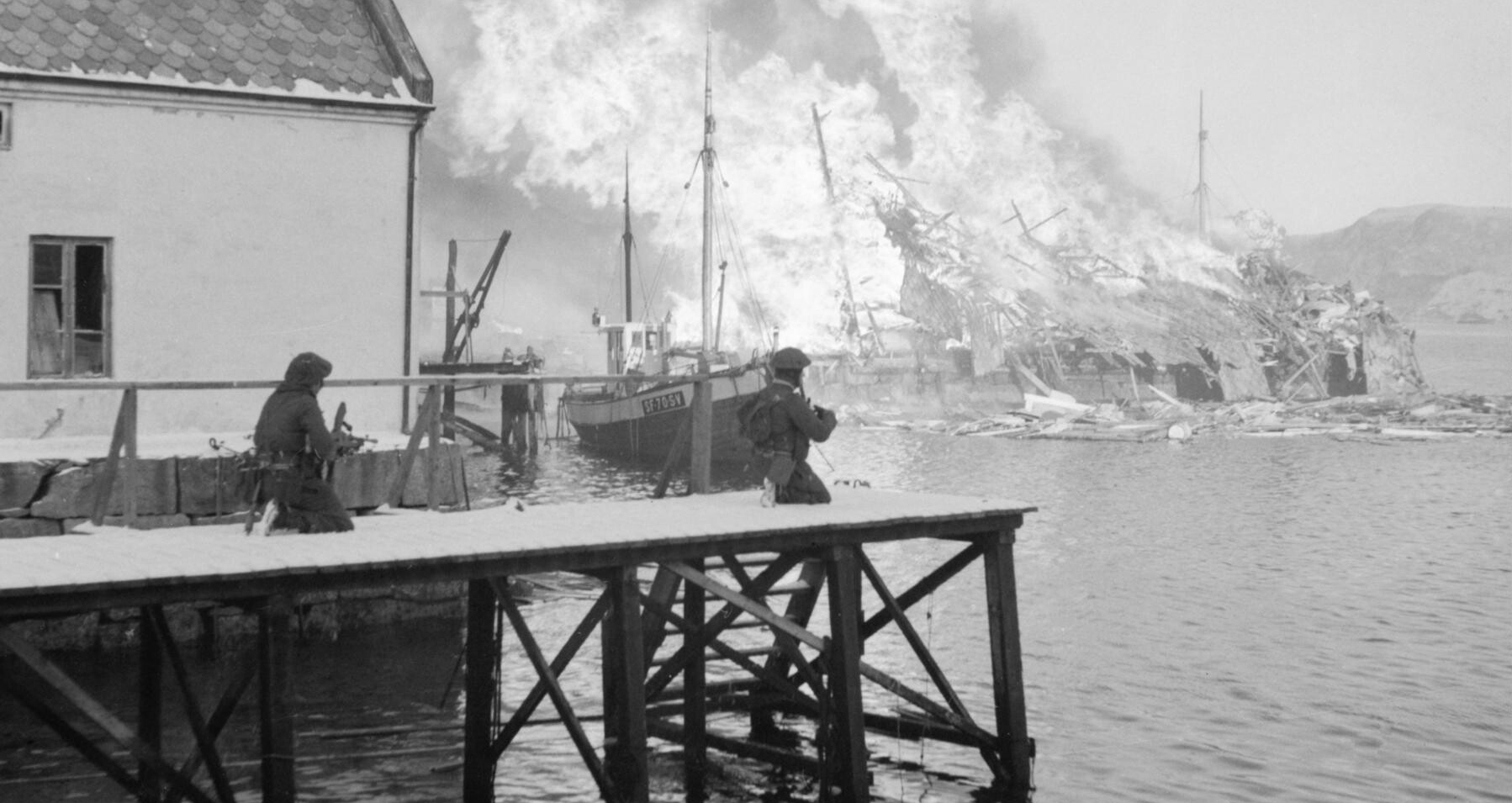
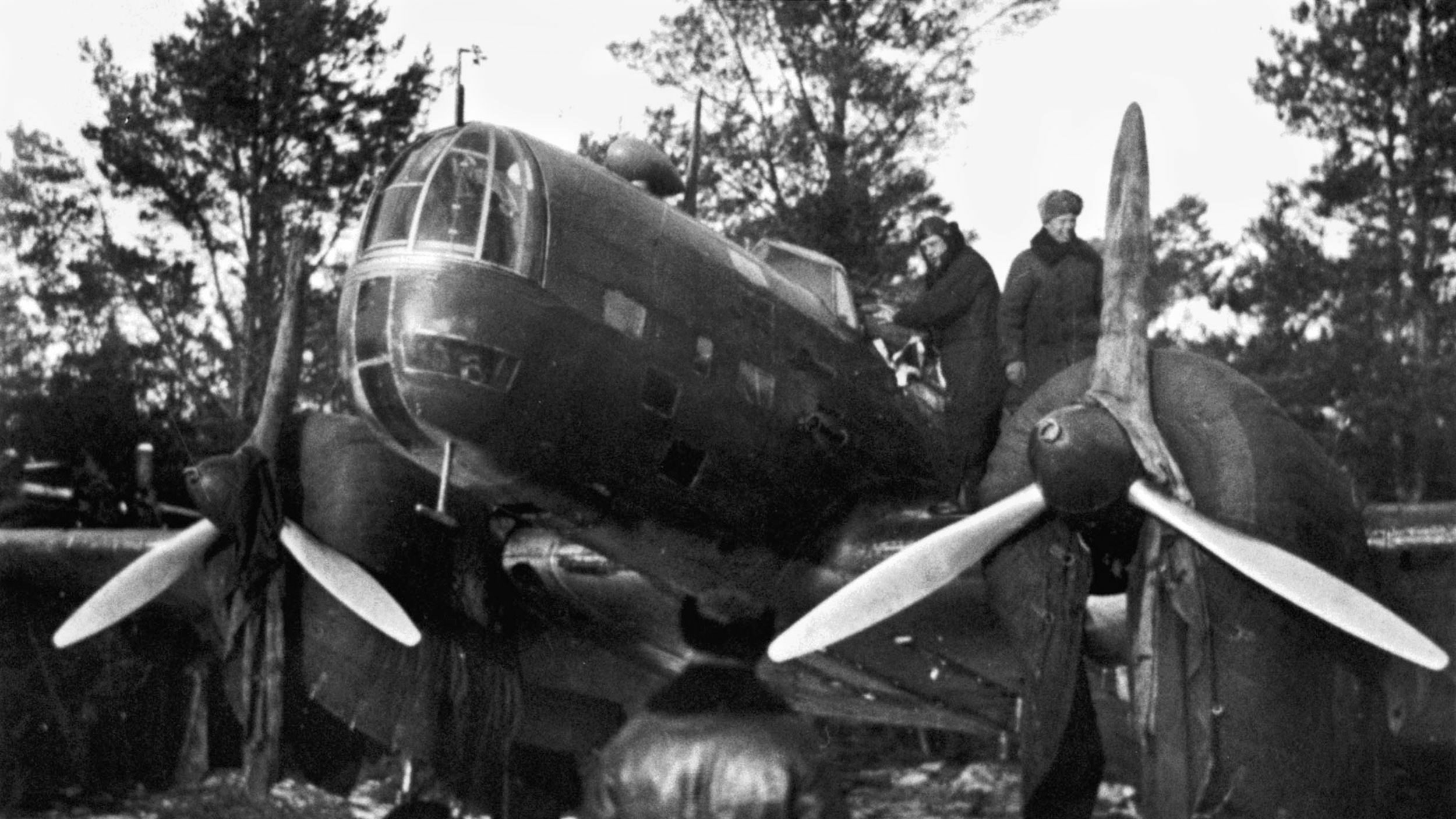
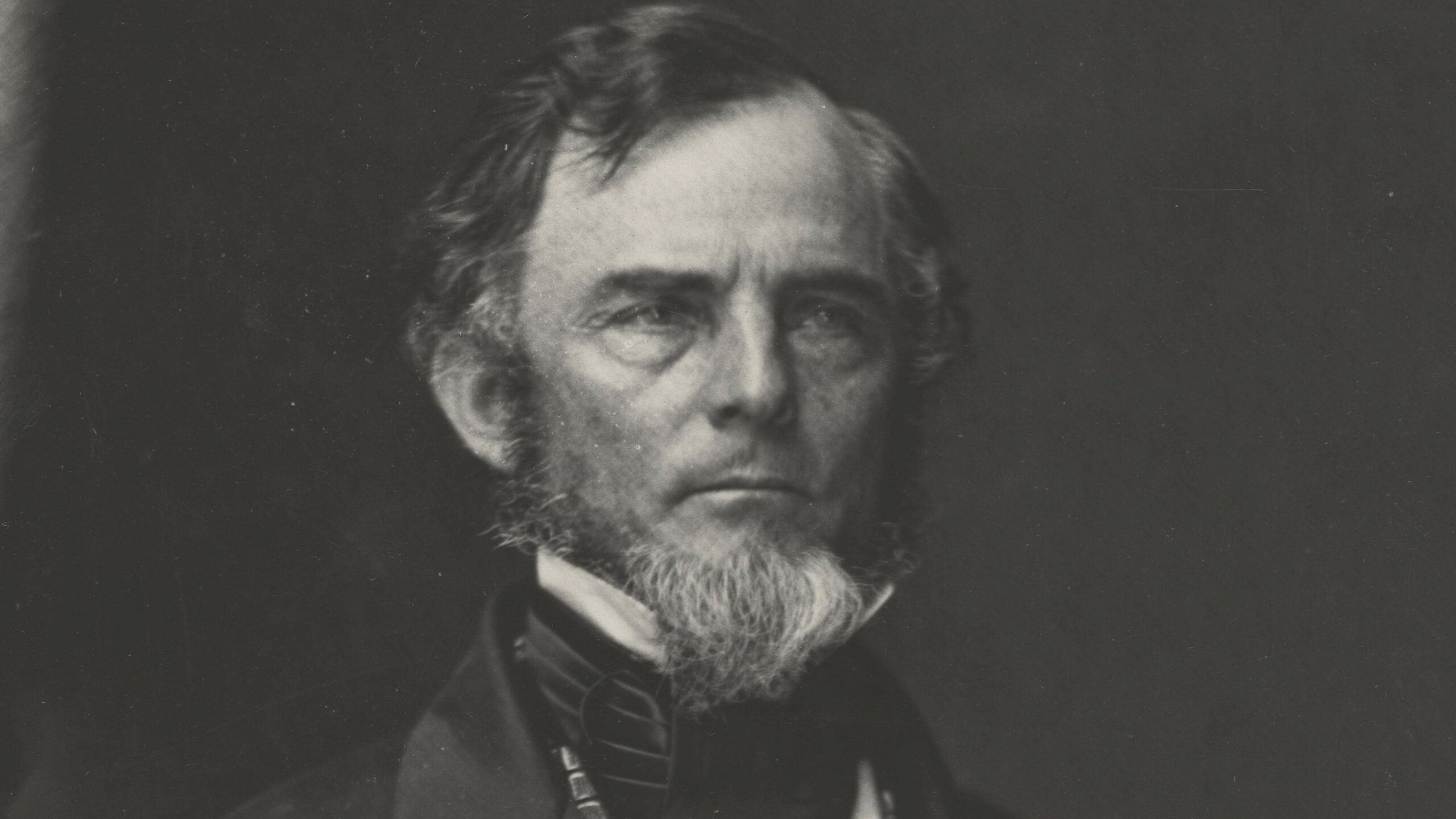
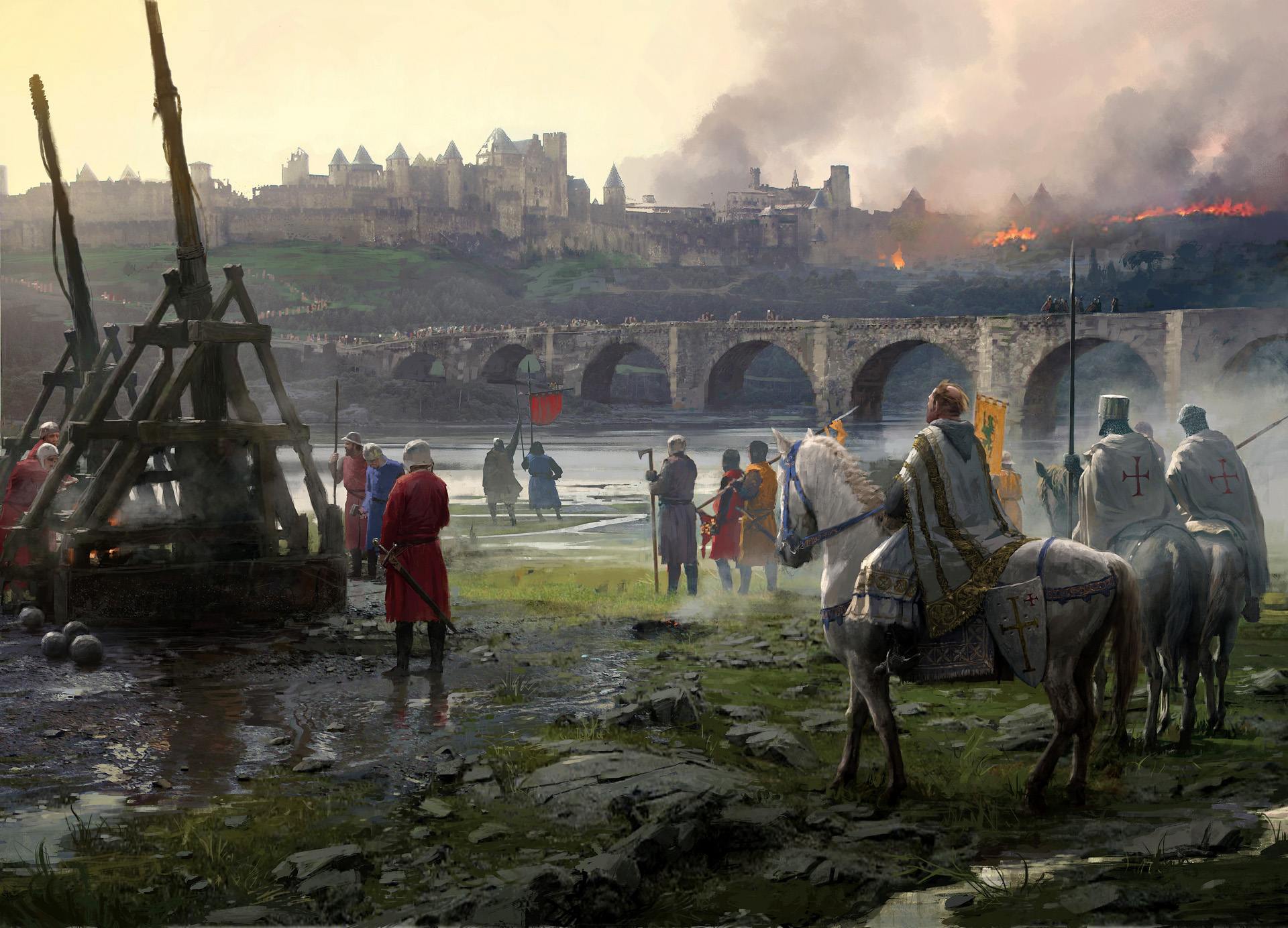
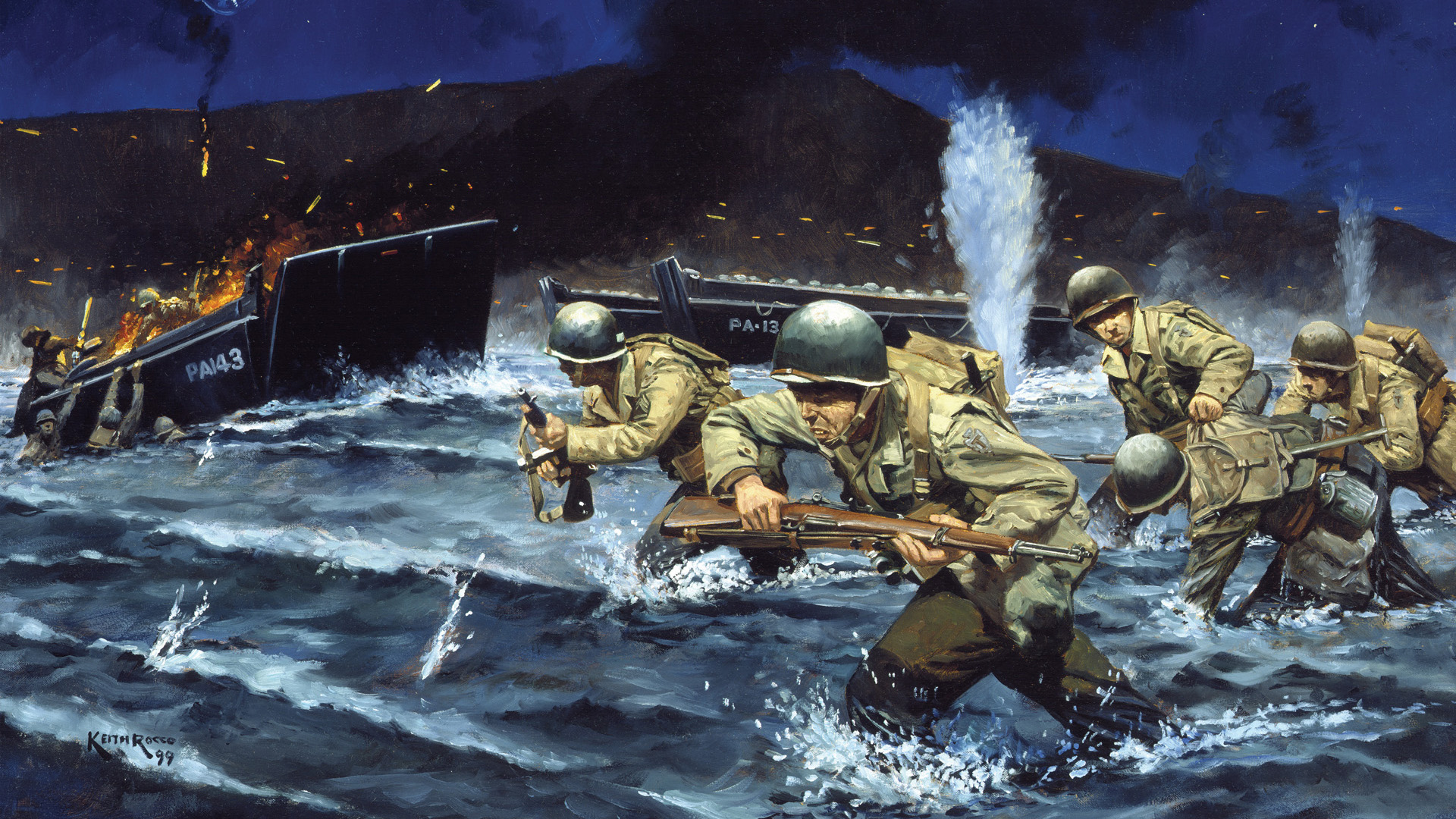
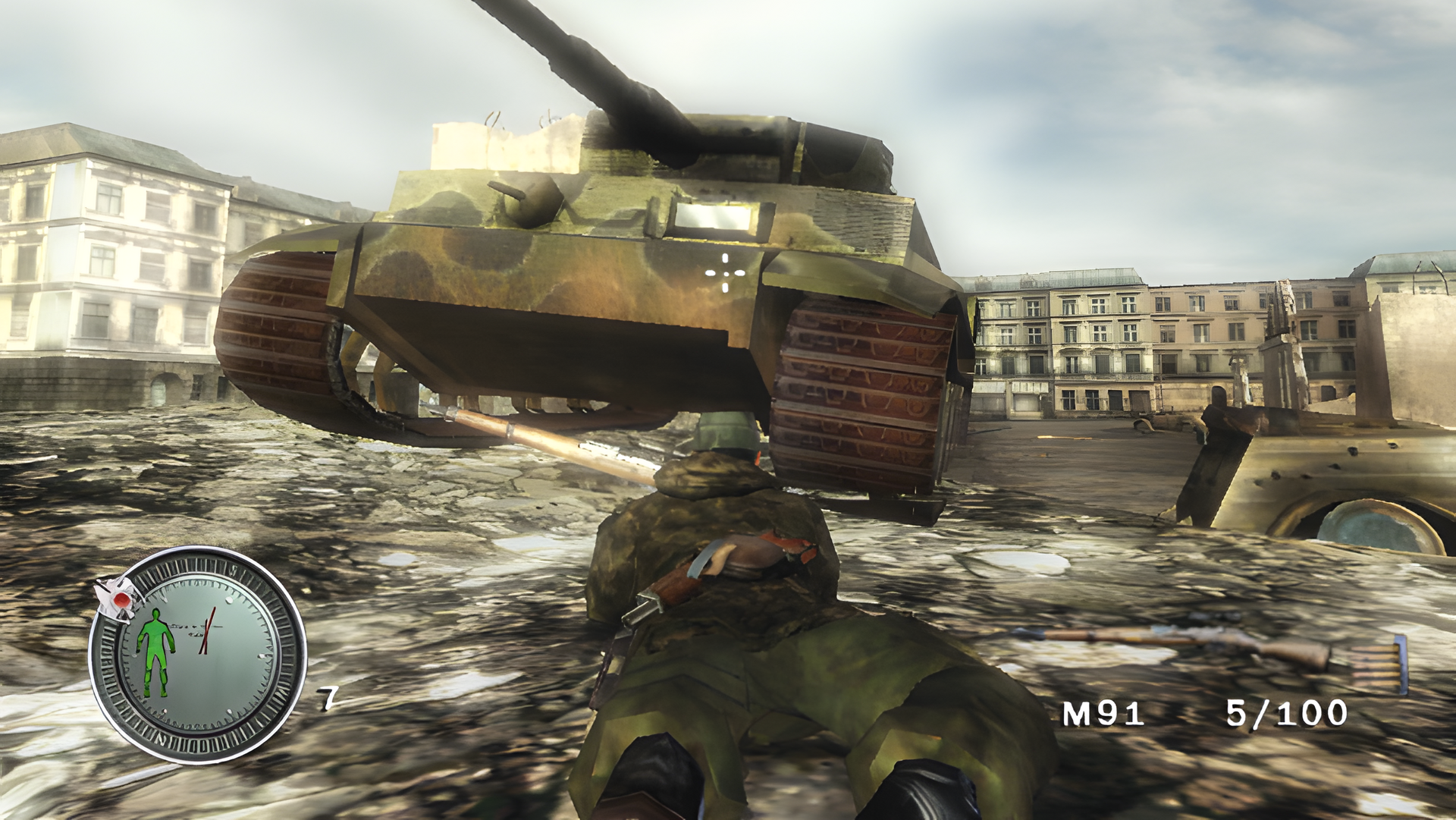
Join The Conversation
Comments
View All Comments